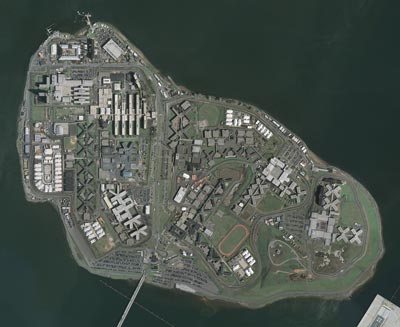
New York City’s Rikers Island complex is one of the most notorious jails in the country. Located on a small island in the East River, in the flight path of LaGuardia Airport, Rikers is known for staggering rates of inmate violence, rape, abuse of mentally ill inmates, and one of the highest national rates of solitary confinement. Though the complex has been the subject of numerous lawsuits and exposés, including a multi-part New York Times series this year on the appalling treatment of mentally ill inmates, it remains wracked by brutality and chaos.
In a scathing report released Monday, the U.S. Attorney’s office for the South District of New York railed against the treatment of adolescent inmates at Rikers, some 51% of whom suffer from some form of mental illness. These 16- to 18-year-old offenders are routinely subjected to physical abuse at the hands of both Department of Corrections officers and other inmates. In a statement, Manhattan U.S. Attorney Preet Bharara referred to the adolescent facilities at Rikers as “a place where brute force is the first impulse rather than the last resort; where verbal insults are repaid with physical injuries; where beatings are routine while accountability is rare; and where a culture of violence endures even while a code of silence prevails.”
Based on interviews with inmates plus hundreds of thousands of pages of investigative files, training materials and disciplinary records, the report is filled with disturbing details. Teen inmates suffered 22 jaw fractures in the first five and a half months of 2012, and 239 head injuries between June 2012 and July 2013. One officer was involved in 76 use-of-force incidents over a six-year period and was disciplined only once during that time. Broken noses, fractured limbs and lacerations requiring stitches are routine, as is the practice of confining those who break jailhouse rules to punitive segregation—23 hours in an isolated cell that is essentially identical to solitary confinement.
The “systemic” problems at the jail are due, in large part, to a lack of training, oversight and accountability. Officers at Rikers have inadequate training in managing adolescents (particularly those who suffer from mental illness), are rarely disciplined for inflicting physical violence on their teenage charges, and often fail to conduct investigations of use-of-force incidents. Even more alarmingly, the report found that the use of force by corrections officers was particularly common in areas without video surveillance cameras—and that 30% of the surveillance footage that should have been available was “missing.”
To address what Bharara called a penal environment “inspired by Lord of the Flies,” the federal attorneys recommended significant reforms to almost every aspect of how young offenders are treated. These include a zero-tolerance policy for failure to report use of force, installing more video cameras, and moving all the youth inmates to a facility off the island that would be supervised by better-trained guards. Now that the report has been delivered to the office of Mayor Bill de Blasio, the city has 49 days to respond to the findings and to present its plan for improving the treatment of New York’s juvenile inmates.
Join us in defending the truth before it’s too late
The future of independent journalism is uncertain, and the consequences of losing it are too grave to ignore. To ensure Truthout remains safe, strong, and free, we need to raise $43,000 in the next 6 days. Every dollar raised goes directly toward the costs of producing news you can trust.
Please give what you can — because by supporting us with a tax-deductible donation, you’re not just preserving a source of news, you’re helping to safeguard what’s left of our democracy.